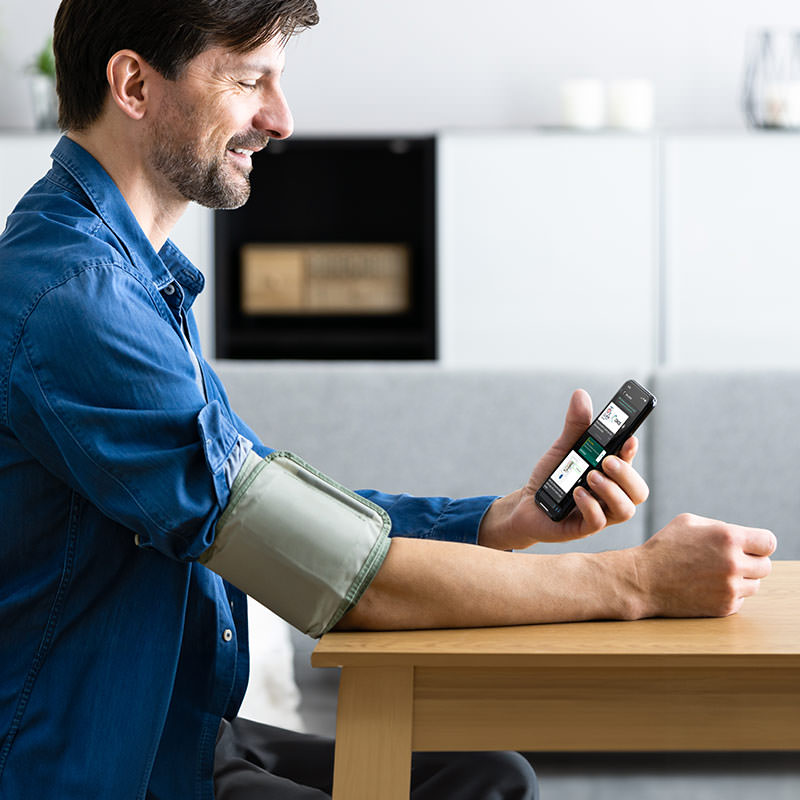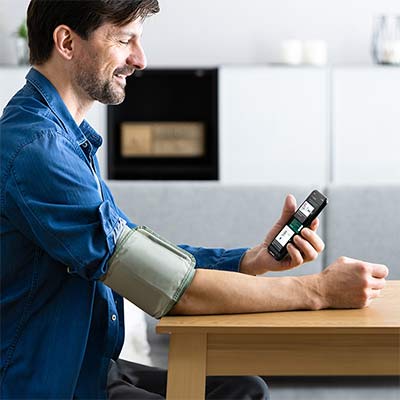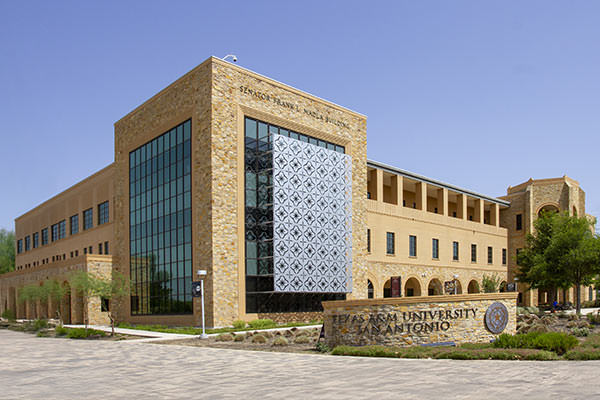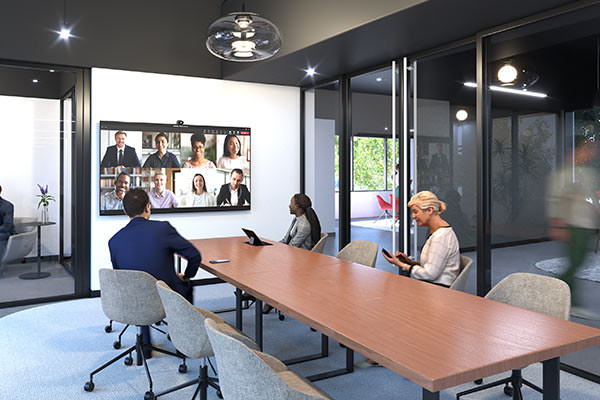Digital Communications Solutions in Healthcare: Powered by CPaaS
Effective communications in healthcare serves as the bedrock for providing exceptional patient care. Today, people expect satisfying digital experiences in every walk of life, whether that is shopping online, booking a holiday, managing finances, or accessing on-demand entertainment. In all these experiences, customer-centricity is the key. Excellent digital experiences are created with the customer at the centre of communications, connecting with them on their preferred platforms and enabling seamless, interactive two-way engagement.
It has been well documented that in recent years the NHS have placed a strong emphasis on improving the patient experience through more timely and accessible communication.
However, with myriad of challenges in front of them including fragmented communication systems, a high dependency on legacy technology, compliance concerns and the complexities associated with care coordination, healthcare organisations are still lagging significantly behind the consumer world.
So, what is the key to unlocking the NHS’ digital front door? How can healthcare providers engage with patients in the way that businesses engage with their customers?
The answer lies in CPaaS – Communications Platform as a Service.
What is CPaaS?
Communications Platform as a Service (CPaaS) is the key to unlocking integrated, two-way digital communications in healthcare. As a cloud-based delivery model, CPaaS enables healthcare providers to add real-time communication capabilities such as voice, video, and messaging to their own applications through the integration and use of APIs. By interacting with patients on the channels they prefer (such as WhatsApp, social media, email, and text) NHS Trusts can significantly enhance patient engagement and streamline healthcare delivery.
With CPaaS solutions such as Webex Connect, the integration challenges that have thwarted healthcare organisations in the past are significantly reduced. By offering a comprehensive suite of development tools, standards and software applications, healthcare organisations can add real-time communication capabilities without needing to build and maintain the backend infrastructure to support it. These solutions leverage AI automation to ease the pressure on already strained resources and through integration with electronic health record systems such as Epic and Cerner, CPaaS is paving the way for enhanced digital communication in healthcare.

CPaaS from Cinos
In Partnership with Cisco
Why Choose Cinos?
Cinos is an agile and innovative systems integrator who specialise in delivering technology solutions that drive digital transformation. We are seen as one of the leading technology providers for the UK healthcare sector, with a proven track record of delivering critical communications and collaboration services for NHS Trusts across the country. As a Cisco Gold Provider, we have the expertise to deliver Cisco’s robust suite of communication technologies, including Webex Connect and Webex Contact Center, tailored to the unique requirements of the NHS.
We prioritise collaborative partnerships with our customers, to ensure a smooth progression through every project phase, from initial planning and design to solution implementation, operation, and ongoing optimisation. With an unwavering commitment to continual improvement, we guarantee that your communications infrastructure will evolve in tandem with industry advancements, safeguarding the efficacy and reliability of your operations.
Experience the difference with Cinos and Cisco, where innovation meets excellence in healthcare communication solutions.
Cisco Webex Connect
Our implementation of CPaaS in healthcare is through Cisco’s Webex Connect service. Webex Connect is an easy-to-use cloud communications platform that reduces the time, cost, and complexity of delivering outstanding patient experiences at scale.
Webex Connect orchestrates and automates end-to-end cross-channel patient journeys by connecting existing backend systems with multiple communication channels to create frictionless experiences. It provides out-of-the-box inbound and outbound integrations with customer and partner applications, as well as pre-built or custom integrations, such as natural language processing (NLP), natural language understanding (NLU), and AI capabilities, to accelerate the development of seamless, futureproofed patient experiences on every channel.
Omnichannel CPaaS for Healthcare
Webex Connect comes with the added benefit of combining its CPaaS capabilities with Cisco’s industry leading Webex Contact Center. In the event that an engagement with a patient requires escalation to a human, Webex Contact Center streamlines omnichannel communications between the patient and the appropriately skilled human agent who is best placed to provide support.
CPaaS for Healthcare
Features and Benefits
Enhanced Patient Engagement
CPaaS enables healthcare organisations to streamline communications, prioritising digital-first, two-way engagement with patients. Providers have the flexibility to connect with patients via messaging, voice, and video across the platforms they prefer such as WhatsApp, social media, email, and SMS. Branded messaging enables NHS Trusts to establish a recognisable and consistent presence with patients, fostering trust and reducing anxiety around fraudulent or scam messaging.
Improving Appointment Attendance
Each missed appointment represents lost revenue and strains already stretched resources. With CPaaS, NHS Trusts can significantly reduce the risk of DNAs occurring in the first place by reminding patients of upcoming appointments and offering convenient options for rescheduling or cancelling. Two-way communication enables patients to confirm their attendance or notify the clinic of any changes, leading to higher appointment attendance rates and fewer wasted slots.

In the NHS, missed appointments / ‘Did Not Attend’ (DNA), are a significant challenge that drains resources and impacts patient care. With over 103 million outpatient appointments booked in 2021/22, approximately 7.6% ended in DNAs, equating to an average of 650,000 missed opportunities per month. The financial strain from these missed appointments is profound, costing the NHS dearly in terms of lost revenue and increased pressure on already stretched services.
In the Cinos Blog, CTO Richard Evans explores the reasons why DNAs occur in NHS and discusses how CPaaS solutions are at the forefront of tackling this issue. From facilitating two-way communication, empowering patients to confirm, acknowledge, or reschedule their appointment to leveraging valuable data-driven insights to predict patient behaviour and engagement levels, learn how CPaaS is transforming the efficiency and reliability of healthcare services.
Operational Efficiency
Integrating CPaaS can streamline various operational processes, reducing manual tasks and thus freeing up staff to focus on more critical tasks. By leveraging AI to augment services, CPaaS solutions can automate routine tasks such as responding to general enquiries, managing appointments, and even offering specialist medical advice. As the intelligence gathered by CPaaS increases, so does the ability to automate more complex tasks; something particularly relevant in healthcare settings, where time saved can directly impact patient care.
Improved Accessibility
For healthcare services, CPaaS can make appointments, consultations, and follow-ups more accessible, particularly for individuals who are unable to visit in person. CPaaS enables healthcare providers to contact and be contacted on whatever channel is most suitable to the patient. This enhances the overall accessibility of healthcare services and is particularly beneficial for patients in remote or rural areas where a video consultation may be more practical than visiting in-person.

Cost Efficiency
Integrating real-time communication capabilities directly into existing platforms mitigates the need for NHS Trusts to invest in expensive, standalone communication systems, resulting in significant cost savings and a better allocation of resources. Moreover, CPaaS facilitates a transition away from traditional SMS messaging, commonly used for appointment reminders and proactive healthcare prompts like flu vaccinations. Traditional SMS is expensive, so by embracing contemporary digital channels, NHS Trusts can deliver enhanced patient experiences at a fraction of the cost.
Enhanced Responsiveness
CPaaS empowers healthcare providers to swiftly respond to emergencies and urgent needs. For instance, it facilitates the dissemination of real-time alerts and notifications on a mass scale during critical situations, such as public health crises, ensuring individuals are informed of safety protocols and receive live updates on evolving situations. Furthermore, in scenarios where physical access to healthcare facilities may be limited, CPaaS-enabled video conferencing, messaging, and voice calling enables providers to remotely assess and treat patients, provide medical advice, and triage cases based on urgency.

Personalised Services
With CPaaS, services can be more personalised based on the communication preferences of the patient. Quite simply, you communicate with patients how and when they want. For NHS Trusts, this could mean optimising patient engagement strategies to align with each patient’s preferred channel and frequency, offering personalised appointment reminders, follow-up, and prescription refill notifications to improve engagement rates and deliver better health outcomes. These services extend to targeted education and outreach messages tailored to specific health conditions with continual refinement through feedback and satisfaction surveys.
Scalability
As a cloud-based platform, CPaaS can dynamically scale resources based on demand. NHS Trusts can easily scale their communication channels up or down based on seasonal trends, fluctuations in patient volume or for emergency situations without significant overhauls to their infrastructure. Furthermore, the flexibility of CPaaS means that as services expand and evolve, Trusts can scale their communications across new channels and use developer-friendly APIs to meet the requirements of specific use cases.

Data Security and Compliance
CPaaS platforms are compliant with relevant data protection regulations, which is crucial for healthcare organisations. To ensure that communication is secure and meets the standards of data privacy laws, such as GDPR in the UK, CPaaS offers features such as end-to-end encryption for communication channels, multi-factor authentication, biometric authentication, and role-based access control. Advanced compliance monitoring and reporting functionality ensures that when integrating with electronic patient records, NHS Trusts will not only be enhancing the patient experience but that they will be doing so in a secure and compliant manner.
Innovation
By harnessing the power of CPaaS healthcare providers can explore new opportunities for innovation in service delivery. New patient care models such as telehealth and remote monitoring become more tangible by leveraging real-time communications and IoT devices such as wearable sensors to monitor patients’ health status, collect vital signs and conduct video consultations. AI will continue to play a transformative role, using data analysis and predictive analytics to identify patterns in behaviour to deliver personalised communication, tailored to the specific needs of the patient.






